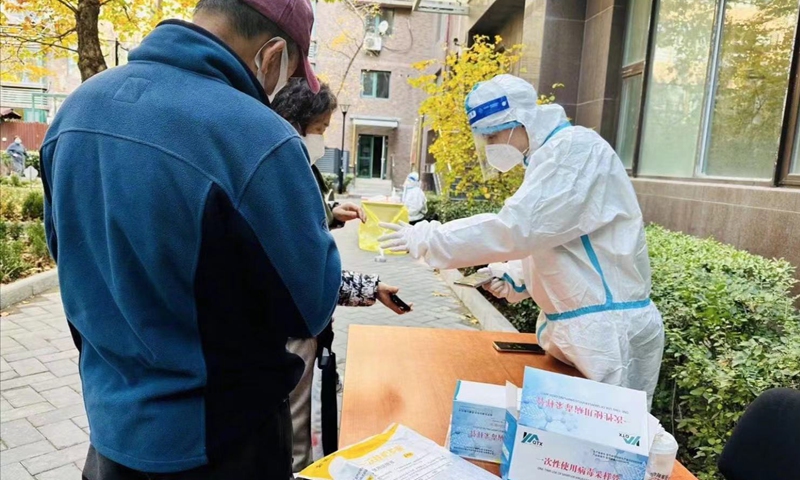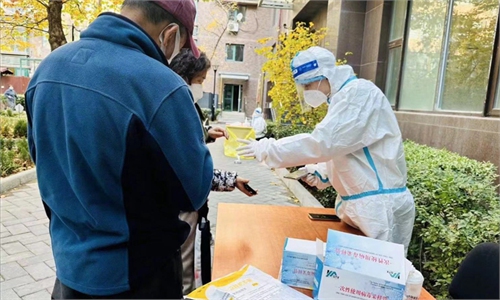28 Chinese provinces adopt optimized measures to COVID-19 response; six cities cancel mass testing: report

People in Beijing's Chaoyang district are getting nucleic acid tests in their neighborhood. The city’s numerous nucleic acid testing sites for large-scale testing that had been set up along the roadsides and around commercial and office areas were temporarily closed in Chaoyang district starting from Monday. Photo: ifeng
A total of 28 provinces, including South China’s Guangdong Province which is hit hardest in the latest COVID-19 flare-up, announced adoption of newly optimized measures to COVID-19 response in the past five days. Moreover, six cities, including Shanghai and Sanya scrapped mass nucleic acid testing, in an effort to implement the new measures, media reported.
Shandong Province in East China even cancelled the requirement for any entries into the province to hold 48-hour valid nucleic acid test, only requiring the test to be done on arrival and the arrivals to conduct three tests in five days, China Times reported on Wednesday.
Guangdong which recorded thousands of cases on a daily basis also adopted the new measures. City of Shantou in Guangzhou, capital of Guangdong announced on Wednesday no longer check 72-hour valid test result in some public places. Shantou recorded one new COVID-19 case on Wednesday.
Officials in Guangzhou, also the hardest-hit city in the province, said on Wednesday to optimize nucleic acid test according to the new measures, and focus test resources on the most severe Haizhu district and other high-risk areas.
Those changes were made after China last week released 20 optimized measures, including shortened quarantine periods for international arrivals and cancelation of circuit breakers for inbound flights.
One of the 20 optimized measures urged against frequent testing in areas with no infections, and stipulated that testing entire districts will only be used to screen transmission chains and find the sources of infections.
In response to residents’ pledge of cancelling 48-hour nucleic acid test, Luoyang’s government in Central China’s Henan Province said on Tuesday that test result is still needed when entering places such as schools; but not necessary when going to other public places, and taking public transports.
Cities of Shijiazhuang in North China’s Hebei cancelled checking nucleic acid test results in some public places.
Shijiazhuang’s relaxing of some COVID-19 prevention measures, sparked speculation of whether the city was being tested for "full relaxation" or was "lying flat" in the fight against COVID-19. Zhang Chaohao, the city's Party chief, soon dismissed such claims. During his visit to a university on Monday, Zhang said that the adjustments were only to implement the 20 measures for optimizing the COVID-19 response, it was not a case of "lying flat," and definitely not "full relaxation."
Some places also stepped up their efforts in enhancing their medical resources, such as hospital beds and storage of medicines, as requested by the new measures.
Wang Qingxian, provincial chief of Anhui Province in East China urged to strengthen establishment of medical resources and storing COVID-related medicine, to meet the need of patients, especially those with underlying risks and elderly.
A district of Erdos, North China's Inner Mongolia Autonomous Region released a series of new measures on Tuesday, asking communities to provide those under home quarantine precaution equipment such as blood oxygen monitor and other portable oxygen generating plants.
In an article published by the Xinhua News Agency on Thursday, it said that the newly released measures do not signal relaxation, reopening or “lying flat.” They are more scientific measures in accordance with China’s situation, which requires to conduct virus prevention faster, and use resources to improve efficiency of COVID-19 control.

